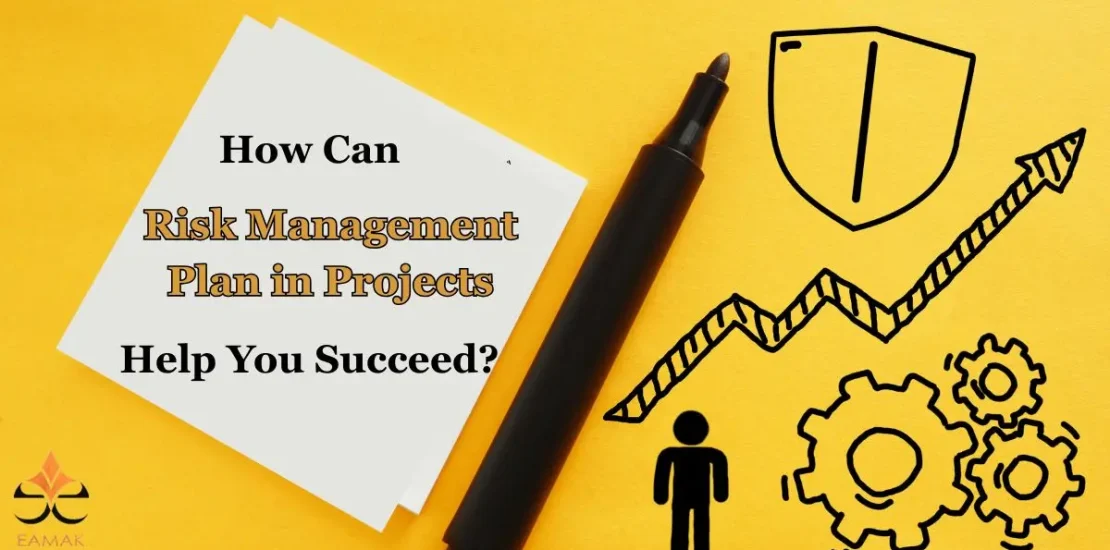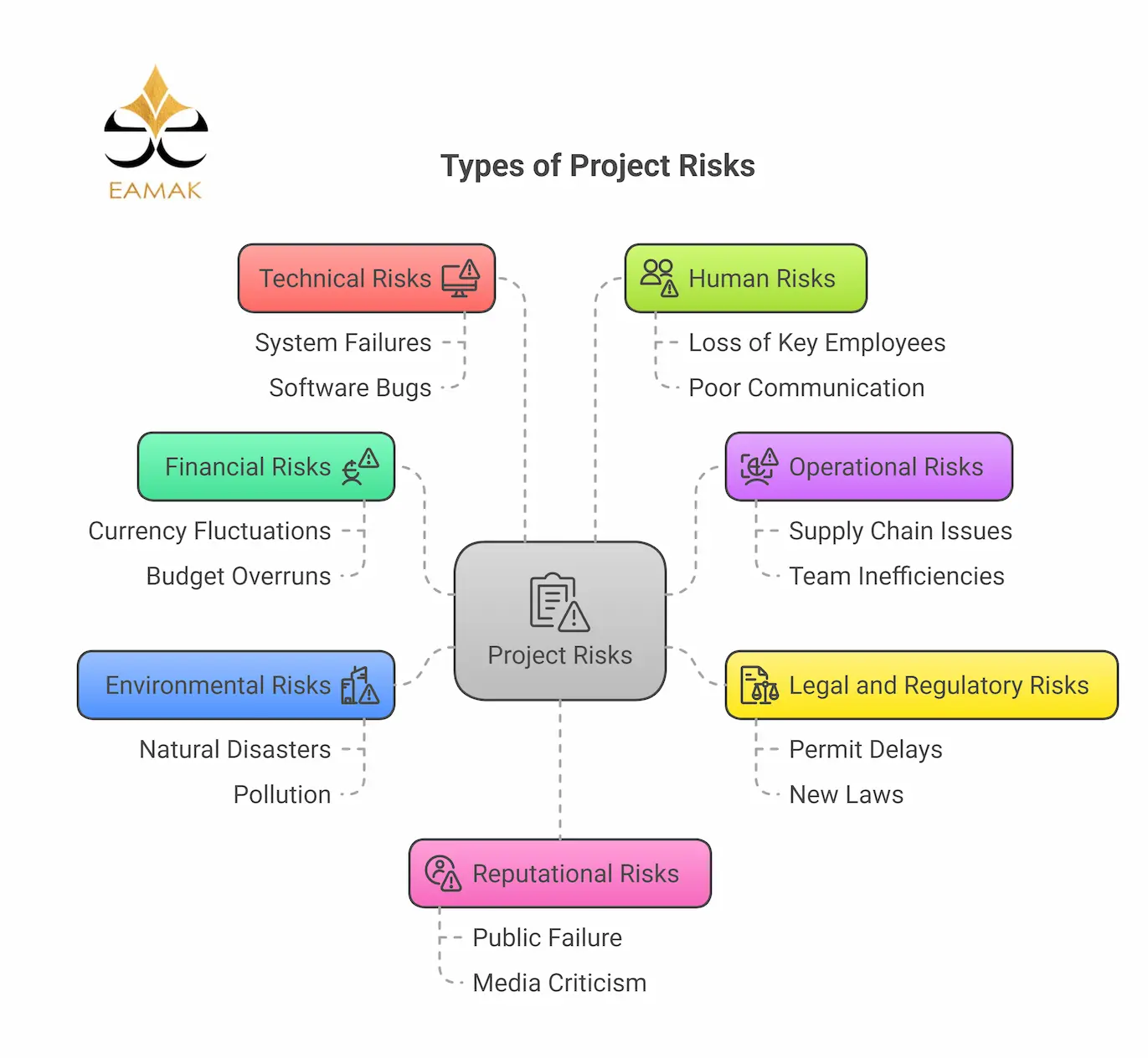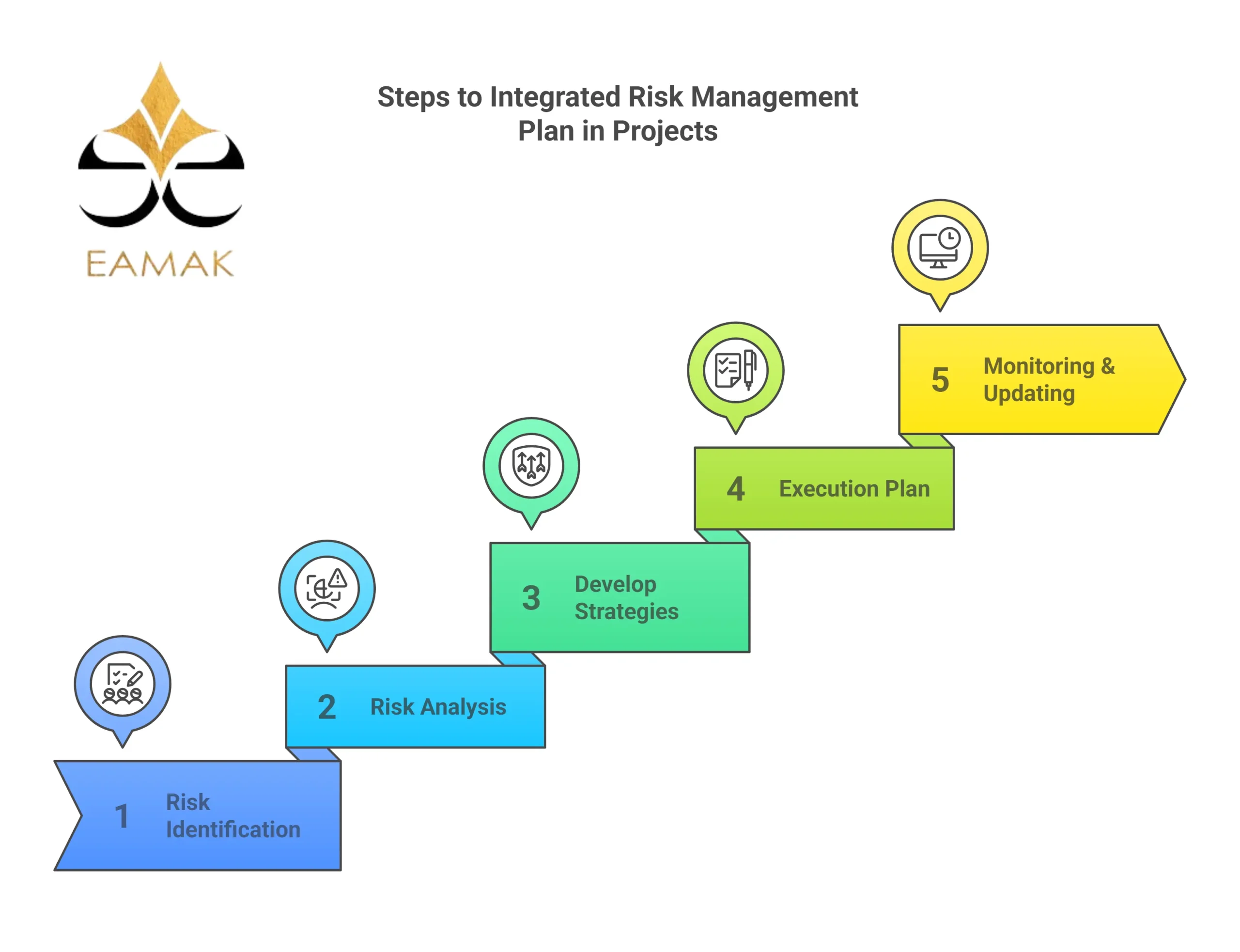How Can a Risk Management Plan in Projects Help You Succeed?
- Posted by:
- Category: Uncategorized

In the business world, no project can achieve success and sustainability without a clear mechanism to deal with potential threats. This is where the importance of a risk management plan in projects becomes evident; it acts as a safety net that protects the company’s resources and increases the chances of success.
This article provides you with a comprehensive guide to understanding the concept of risk management, its importance, types, and how to build an effective plan to reduce its impact on your projects.
What is Risk Management in Projects?
Many people ask, What is risk management in projects?
The answer is that it’s a process aimed at identifying, analyzing, and dealing with risks that may affect the project’s goals.
This process includes specific steps, starting with identifying potential threats, evaluating their likelihood and impact, and then developing preventive or corrective strategies to reduce their effects.
A risk management plan in projects usually includes a detailed analysis of internal and external risks, documents them in a risk register, and updates it regularly throughout the project’s lifecycle.
What is the Importance of Risk Management in Projects?
Both startups and large organizations often ask, What is the importance of risk management in projects?
Simply put, having a clear risk management plan reduces the chances of failure, improves the ability to anticipate future challenges, and boosts the confidence of investors and stakeholders in the project.
A risk management plan in projects helps achieve the following:
- Reducing potential losses.
- Enhancing decision-making.
- Improving project execution quality.
- Optimizing resource allocation.
- Responding quickly to crises.
Types of Project Risks

Project risks vary depending on the nature of the project and its sector. However, they can generally be categorized as follows:
1. Financial Risks
This includes all money-related challenges, such as currency fluctuations, delayed funding from investors, or budget overruns. These can negatively affect cash flow and profitability.
2. Operational Risks
These include issues in the supply chain, inefficiencies in the team, or disruptions in daily operations due to administrative or technical failures. Such risks may cause project delays or increased costs.
3. Legal and Regulatory Risks
These involve delays in permit approvals or new laws that impose restrictions on the project. Non-compliance may lead to fines or project suspension.
4. Environmental Risks
Such as natural disasters (earthquakes, floods, hurricanes) or environmental impacts caused by the project, like pollution or depletion of natural resources.
5. Technical Risks
System failures, software bugs, or weak integration between systems. These risks are more common in technology-dependent projects.
6. Human Risks
Like losing key employees or poor communication within the team. These risks can affect execution quality and deadlines, leading to significant losses.
7. Reputational Risks
If the project publicly fails or faces harsh criticism from customers or the media, it may result in loss of brand trust and long-term damage to the company’s reputation.
Understanding the different types of project risks is the foundation for building a comprehensive and effective risk management plan in projects.
What are the steps of risk management?
These steps are the backbone of any successful plan. They enable executives to tackle challenges in a scientific and structured way. The steps of risk and crisis management include
1. Risk Identification
Start by identifying all potential threats that may face the project, whether internal, like poor coordination, or external, like market changes.
2. Risk Analysis and Evaluation
This involves studying each risk in terms of likelihood and severity. You can use a risk matrix to prioritize risks.
3. Developing Response Plans
Decide how to deal with each risk type, whether to avoid, reduce, transfer, or accept the risk.
4. Implementation
Translate the response plans into practical steps, assign responsibilities to teams, and start execution.
5. Monitoring and Review
Continuously monitor the implementation, evaluate the effectiveness of the plan, and update it as needed.
Following the steps of risk management accurately ensures that your risk management plan in projects is practical and effective in protecting your project goals.
Integrated Risk Management Plan in Projects
 Creating an integrated risk management plan in projects requires following structured and well-studied steps to ensure an effective response to any potential threat. Here’s how to build the plan professionally:
Creating an integrated risk management plan in projects requires following structured and well-studied steps to ensure an effective response to any potential threat. Here’s how to build the plan professionally:
1. Risk Identification
Gather input from all stakeholders. Use workshops, surveys, or SWOT analysis (Strengths, Weaknesses, Opportunities, Threats) to list potential risks.
2. Risk Analysis
Assess each risk based on its likelihood and impact. Use tools like the risk matrix or scenario analysis to prioritize and estimate outcomes under different conditions.
3. Developing Response Strategies
Choose one of the four standard responses:
- Avoidance: Cancel the high-risk activity altogether.
- Reduction: Take steps to minimize the probability or impact.
- Transfer: Shift the risk to a third party through insurance or outsourcing.
- Acceptance: Acknowledge the risk and prepare to manage its impact, especially if it’s low severity.
4. Execution Plan
Document detailed steps for each strategy, assign responsible parties, set timelines, and include performance indicators and review dates.
5. Monitoring and Updating
Regularly review and revise the plan based on project progress and changing conditions. Designate teams or committees to oversee this task and ensure real-world application of the Risk Management Plan in projects.
By applying an integrated plan, organizations can prepare for unexpected surprises and improve their financial stability.
Conclusion
By preparing a risk management plan in projects, businesses can face challenges with greater confidence, reduce failure rates, and achieve more consistent and sustainable results.
While risks can’t be avoided completely, smart management ensures project success and continuity in a competitive and complex environment.
Why Choose Eamak?
If you’re looking for a strategic partner to help you manage risks with confidence and professionalism, Eamak Financial and Administrative Consulting is your ideal choice.
With our extensive experience and expert team, we provide you with a risk management plan in projects tailored to your business nature and goals.
Contact us today for a consultation and make your project safer and more stable than ever before.

